Into the Yukon
June 24-25, 2015

Heading north from Muncho Lake we came to Liard Hot Springs. It is a
popular stop along the Alaska Highway; it was also a favorite of the
army soldiers who built the highway in 1942. The water was
prtetty hot; I had to move to the cooler end of the pool.
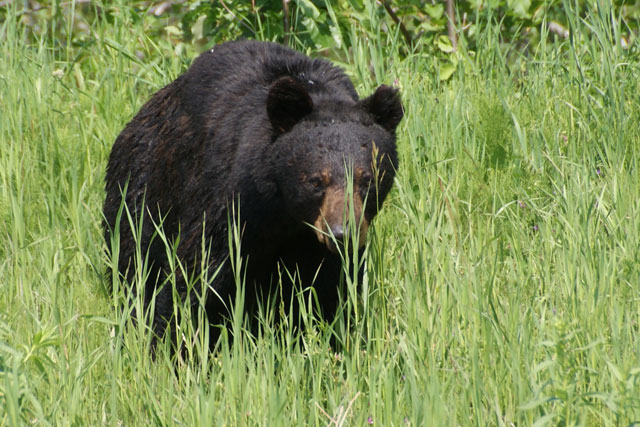
Back on the highway we encountered this black bear having a meal
alongside the road. It appears that the bears like the vegetation that
grows in the roughly 50 foot wide cleared area adjacent to the highway.
Perhaps they need something growing there that doesn't grow deeper in
the forest.
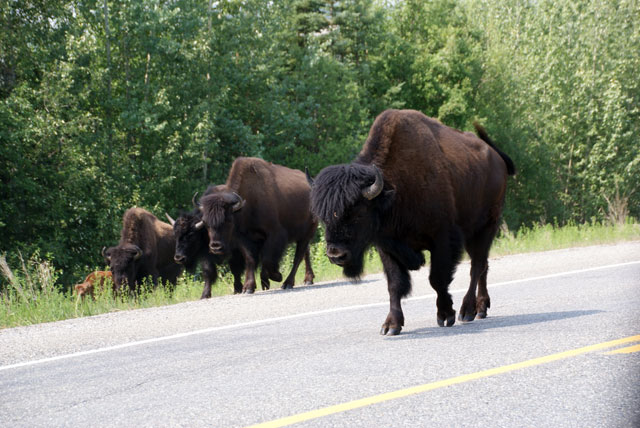
British Columbia has about 250 of these wood bison. Unfortunately, they
lose about 10 per year due to being hit by vehicles. One sees signs
along the highway referring to the bison as "Alaska Highway speed
bumps" and urging drivers to slow down.
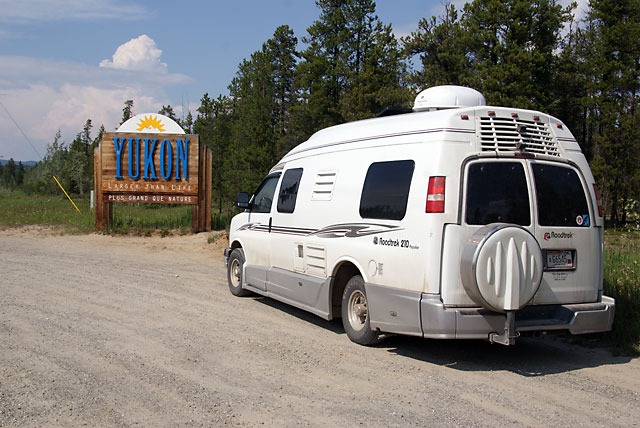
A little farther along we entered into the Yukon Territory (the highway
actually snakes back and forth across the BC-Yukon boundary six times).
This brings us to the 60th parallel.
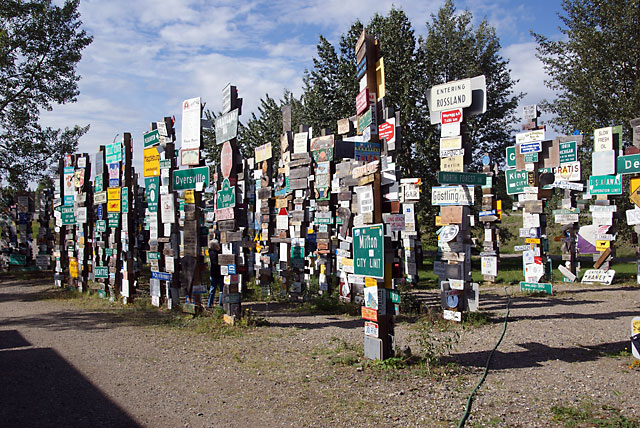
In 1942, a homesick soldier put up a sign in his camp in Watson Lake
showing the distance to his home in Danville, IL. Other soldiers
followed his lead and added signs of their own.This has now become a
tradition; a lot of people from all over the world put up all kinds of
signs. There are now an estimated 80,000 signs in the Watson Lake
signpost forest.
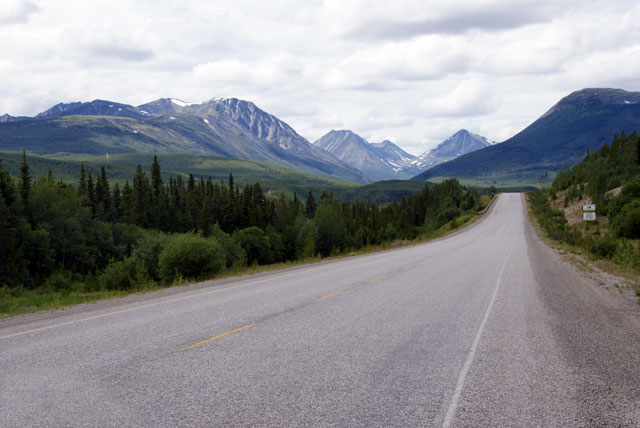
The mountains along the British Columbia - Yukon border are very
scenic. The highway along here is the only road for many miles, so we
are passing through an immense wilderness area.

Little Rancheria Waterfall is a very pleasant and short walk from a rest area along the highway.

The bridge across Teslin Lake is the longest bridge on the Alaska Highway.
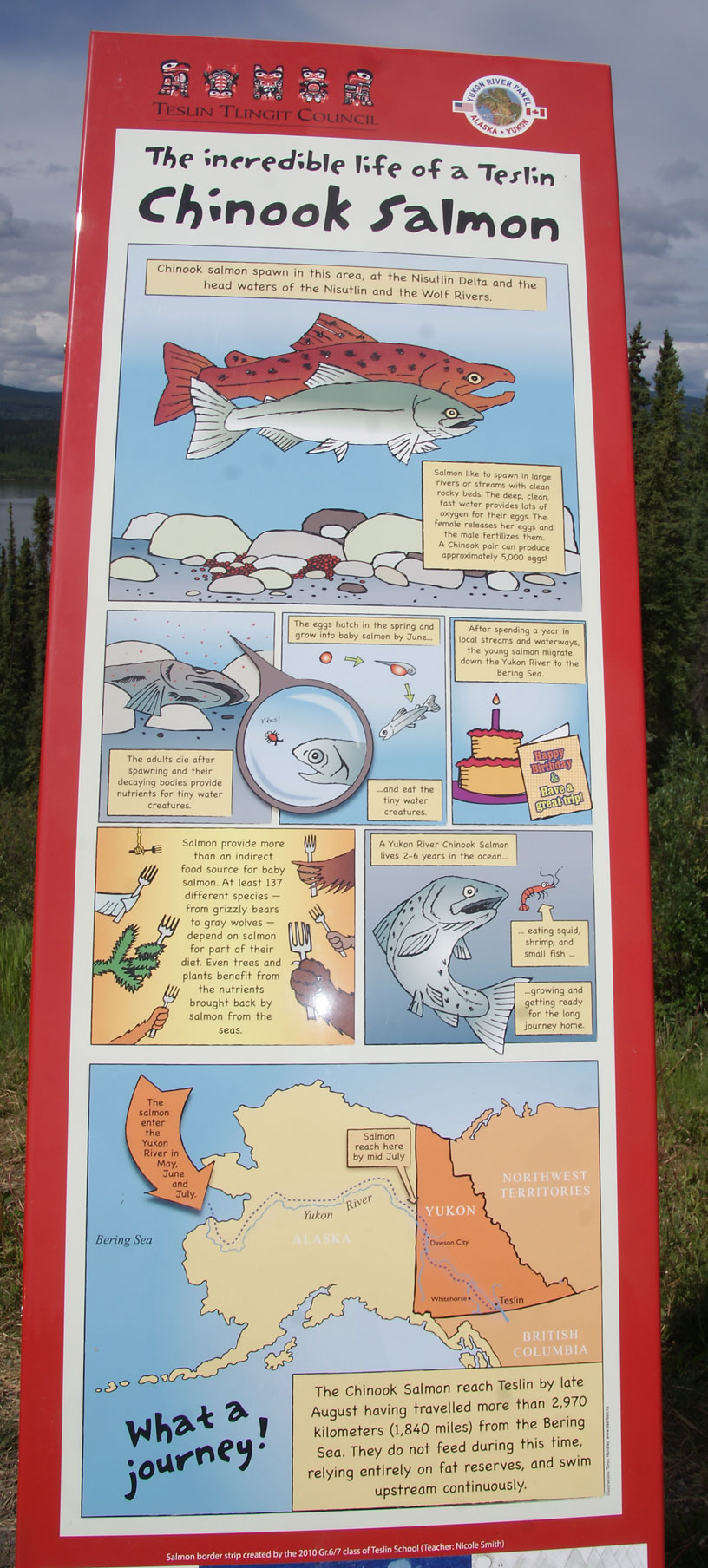
This poster showing the life cycle of Chinook salmon was done by sixth
and seventh graders in Telsin and posted at a scenic viewpoint above
Teslin Lake. After spending 2 - 6 years in the ocean, the salmon swim
1840 miles upstream without eating to where they were hatched. There
they spawn and die.

George Johnston (1893 - 1972) was a Tlingit native living in Teslin,
Yukon who became a skillful hunter and trapper. As a young man he
acquired a camera and photo developing kit and started teaching
himself photography. Carrying his camera everywhere he went, he
developed a striking photographic record of Tlingit life in the early
part of the 20th century. He also had an interest in cars even though
there were no cars, or even roads, in Teslin. In 1929 he bought this
car in Whitehorse and had it brought to Teslin by barge. He then hired
local men to help him clear trees for a three mile road in Teslin and
made money by giving rides to people who wanted their first ride in a
car. When the army came through in 1942 building the highway, his three
mile long road was incorporated into it.
In the winter he painted the car white and drove it on the frozen lake for hunting.
The animal sightings along this stretch:
two black bears,
one herd of bison and a few stragglers,
one fox who was too skittish to be photographed,
and one rabbit (hare?).
Yet to be seen - a grizzly bear.









